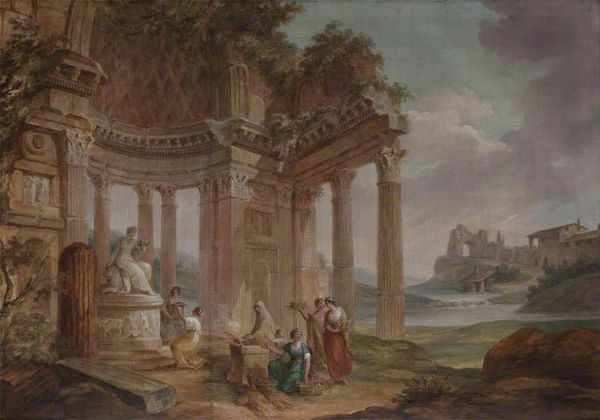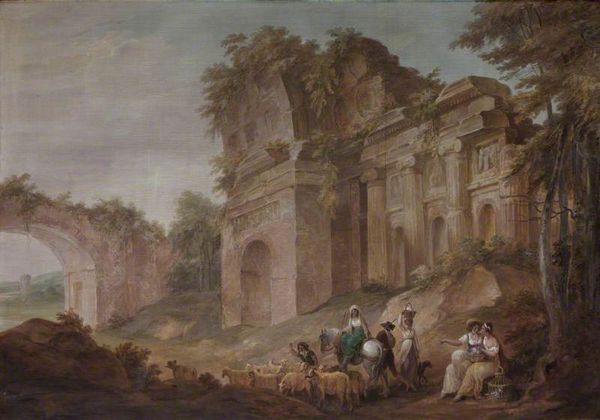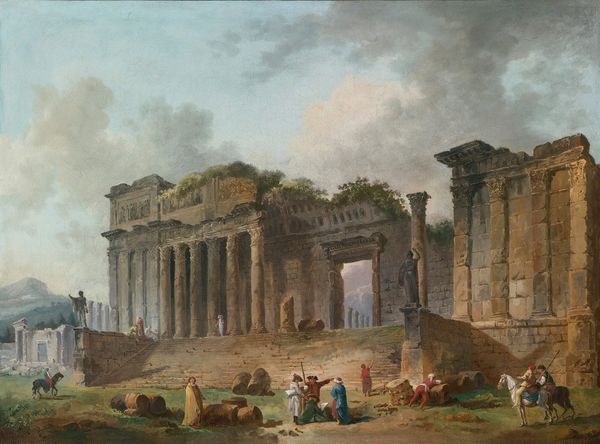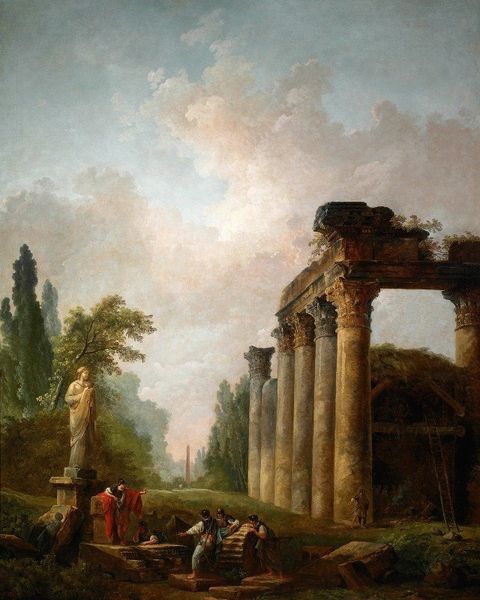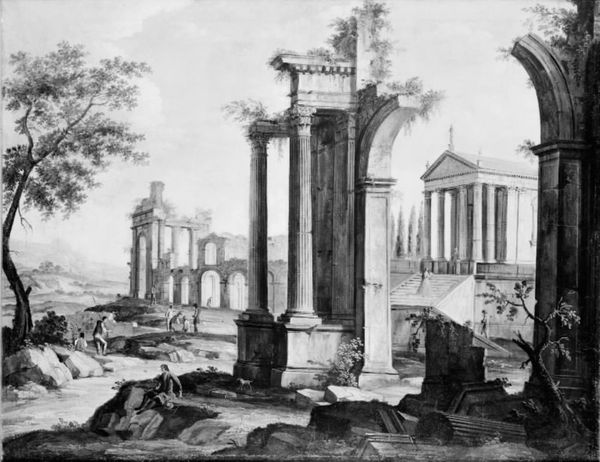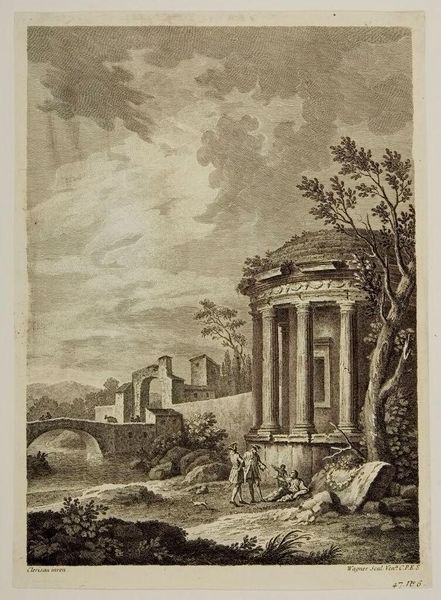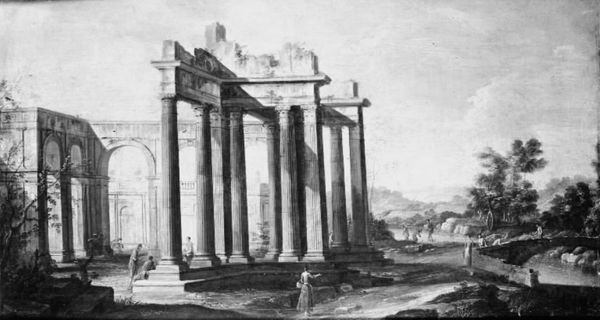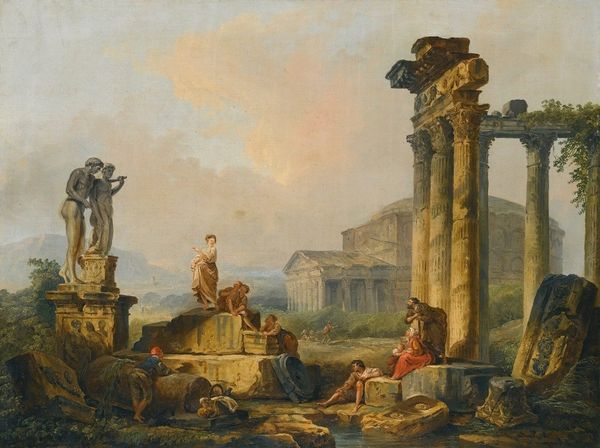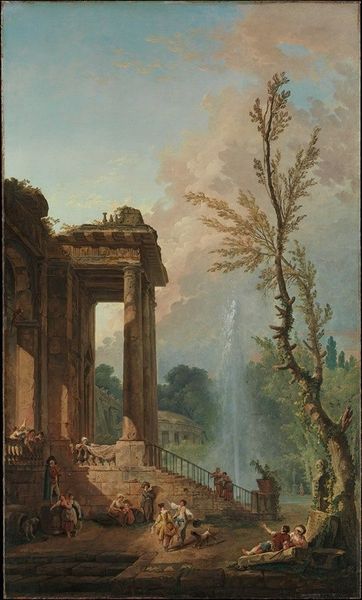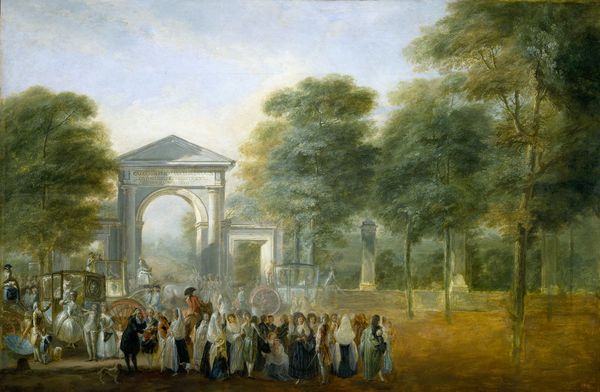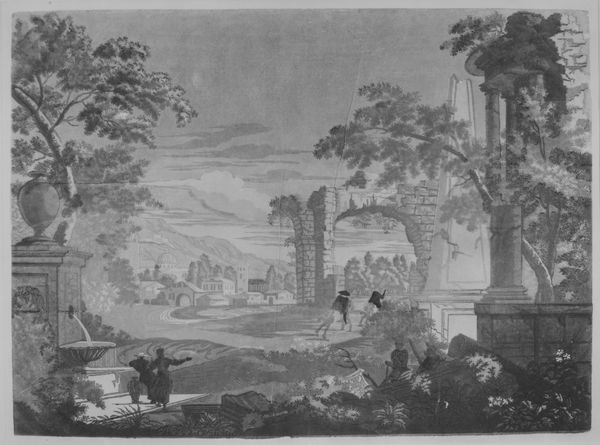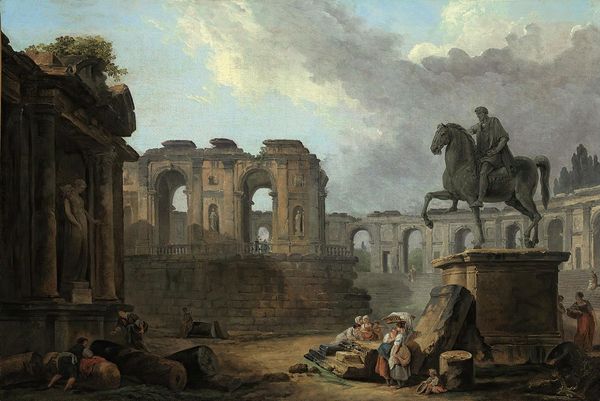
Copyright: Public domain
Curator: This oil painting, dating to 1778, is titled *Classical Ruins* and was painted by William Hamilton. I’m immediately struck by its somber yet idyllic mood. What captures your attention first? Editor: The romantic decay, certainly. These ruins evoke a sense of lost empire, of grand narratives fractured and overgrown by the everyday. It feels loaded with allegory. Curator: Exactly! Neoclassicism loved revisiting the perceived ideals of ancient Greece and Rome, but through a lens of their own social and political moment. We have the genre-painting of contemporary people casually occupying the space, their existence entwined with the remnants of prior civilization, while we contemplate the shifting relationships of power. What statement, do you think, Hamilton is making with this? Editor: Maybe it is one that considers the cyclical nature of civilizations. The figures seem to have reclaimed the ruins as a social space. Is he acknowledging that, to the figures within the work, this collapse of empire allows for a new societal formation and shared public experience? Curator: Precisely. The architecture isn't simply depicted; it's performed. The presence of the figures transforms them from static remnants into stages for contemporary existence and, potentially, disruption. Think about it – is the implication here of empire a specifically Western context? The ruins remind us of a specific style of art but their collapse into public forum removes ownership over the work to all in frame. Editor: That reframing makes me reconsider what constitutes power. This seemingly pastoral scene quietly questions our ingrained reverence for these traditional seats of power. Who truly shapes our world when they no longer do? Curator: Yes. Perhaps by showing these ruins, reclaimed by everyday life, Hamilton invites us to reflect on the power structures that persist, or the ones we mistakenly consider eternal. Editor: I appreciate how it invites the viewer to ponder the legacy of past empires but to be introspective. There is an acknowledgment that even our current day assumptions, like stone structures, can decay, both in time and societal impact. Curator: A fruitful reflection, then. Art serves to mirror ourselves to the societies we shape!
Comments
No comments
Be the first to comment and join the conversation on the ultimate creative platform.
